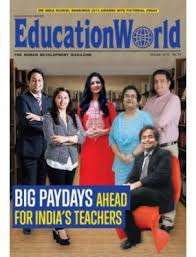- Leadership
Leading Adaptive Resilience
Why organizational resilience requires adaptive leadership particularly in times of crisis
According to a 2025 World Economic Forum paper, “resilience has emerged as the key capability essential for both survival and success in a world shaped by accelerating change. Most companies feel unprepared for today’s uncertainties, leaving critical gaps in disruption readiness. Organizations tend to prioritize quick fixes and neglect foresight and proactive risk management—both key to thriving in uncertainty.”
Faced with dire economic headwinds, technological, market, and regulatory disruption, and potential cyberattacks, organizational and leadership resilience become essential assets for businesses of all types.
Another more recent quote also applies, one from Charles and Eddie—“Keep on rolling with the changes, until the sun comes out again.” But for many organizations the adaptability this implies does not come easily. The capacity to roll with the changes, to adapt to fast moving conditions, varies across different industries and sectors—with those cultures that place a higher value on hierarchy and authority, faring less well than those that emphasize flexibility and autonomy.
Tech companies and startups often cultivate cultures that are explicitly conducive to innovation and experimentation, along with leadership mindsets and organizational structures at ease with change. In contrast, traditional organizations in highly regulated or unionized sectors, such as finance, transport, manufacturing, healthcare, education, or public services, lack the agility to handle change due to the necessity of complying with established regulations and procedures.
A 2024 study from Brazilian academics, Michele Sott and Mariluza Bender, The Role of Adaptive Leadership in Times of Crisis, emphasizes the importance of ‘adaptive leadership’ and a corresponding agile culture in building organizational resilience.
The theory of ‘adaptive leadership’—developed by Ronald Heifetz and Marty Linsky, and formalized in Heifetz's 1994 book, Leadership Without Easy Answers—proposes a clear distinction between two types of problems: technical challenges—problems for which existing expertise, procedures, and knowledge provide a clear solution; and adaptive challenges—complex, evolving problems with no clear-cut solutions.
While systems can be put in place to deal with technical challenges, adaptive challenges require people to change their ways of thinking and working. In times of crisis, rapid change and disruption it is the preparedness and ability to successfully address adaptive challenges that underpin an organization’s resilience.
Adaptive leadership mindset
Adaptive leadership relies less on control and more on collaboration, focusing on flexibility, empathy, and transparent communication. It emphasizes mobilizing collective effort, empowering teams, fostering continuous learning and innovation, and embracing diverse perspectives.
In contrast to traditional leadership, which often relies on fixed structures and hierarchies, adaptive leadership encourages leaders to respond creatively to evolving circumstances and adjust to external pressures such as market fluctuations, technological advances, and global crises. The emphasis on empathy and communication enables leaders to build trust and foster collaboration, which are critical for driving collective performance within teams.
Adaptive organizational culture
Organizational cultures that are not driven by rigid systems, but feature trust, psychological safety, empowered teams, open communication, and innovation are able to build an adaptive capacity. Whereas an inflexible, change-resistant culture can serve as a significant barrier. For many companies taking this approach may involve a fundamental transformation in organizational mindset and practices, implementing leadership development programs, revising policies and processes, facilitating continuous learning, and unlearning deeply ingrained practices.
Organizations will often have to navigate significant challenges when implementing adaptive leadership practices and corresponding changes to their culture. However, the potential benefits—such as enhanced innovation, flexibility, and ultimately organizational resilience—can offer substantial long-term value, making the efforts worthwhile.
• • •
Preparedness for resilience—as called for by the WEF—is built on these two main pillars, adaptive leadership, and the adaptive capacity of organizational culture. Once these pillars are in place other detailed resilience preparation can follow. Internal organizational preparedness will focus on proactive contingency planning for technological advances, for cyber security, and for HR and supply chain flexibility, etc. External preparation involves building strong social networks and cross-sector ecosystems—with public-private sector collaboration being specifically mentioned by the WEF.
……………………………………………………………………………………………………………………
Access the research paper: Sott, M.K.; Bender, M.S. The Role of Adaptive Leadership in Times of Crisis: A Systematic Review and Conceptual Framework. Merits 2025, 5, 2. https://doi.org/10.3390/merits5010002
And the WEF paper: ‘Deploying resilience for success in a volatile world’ World Econ Forum, 2025
DEVELOPING LEADERS QUARTERLY MAGAZINE AND WEEKLY BRIEFING EMAILS

































